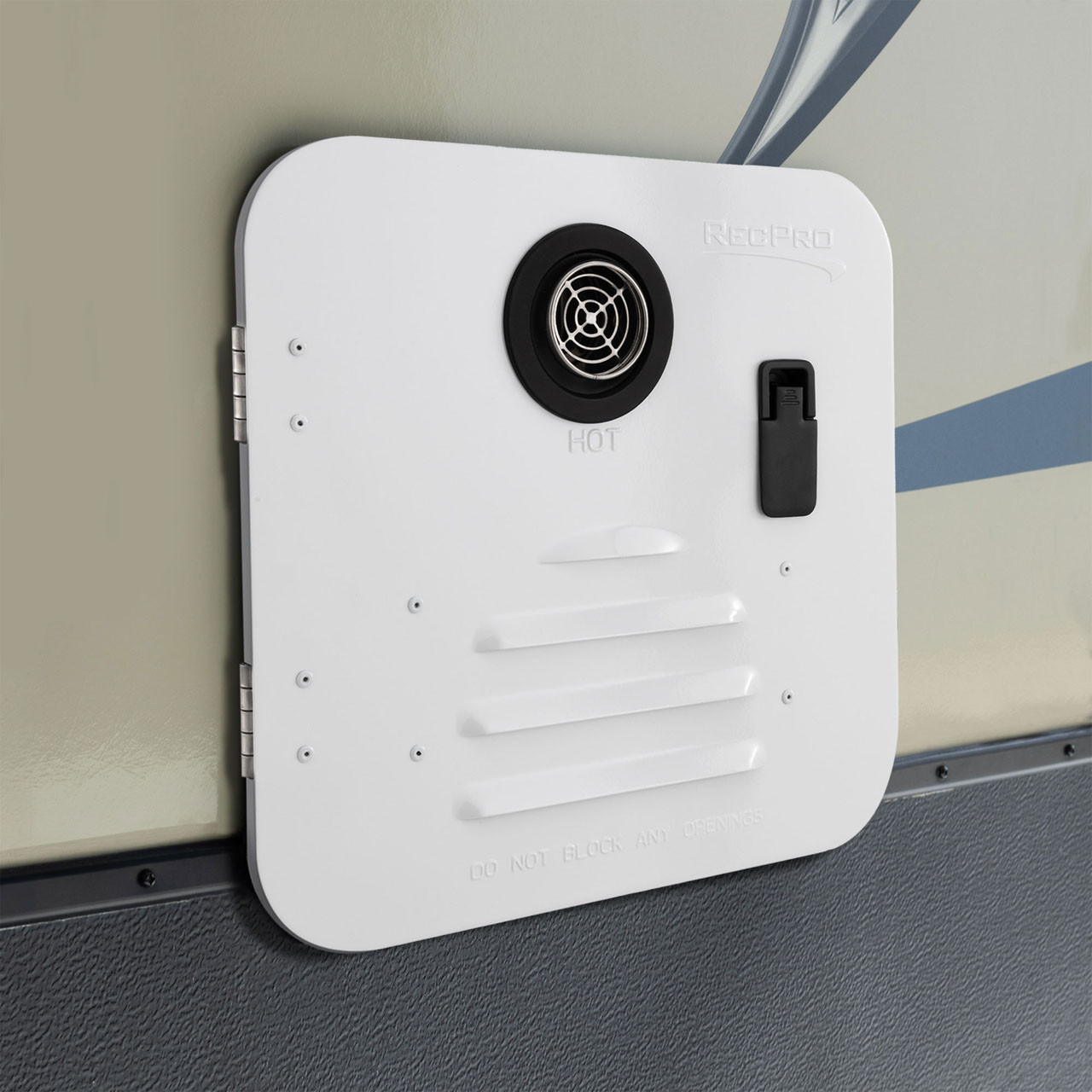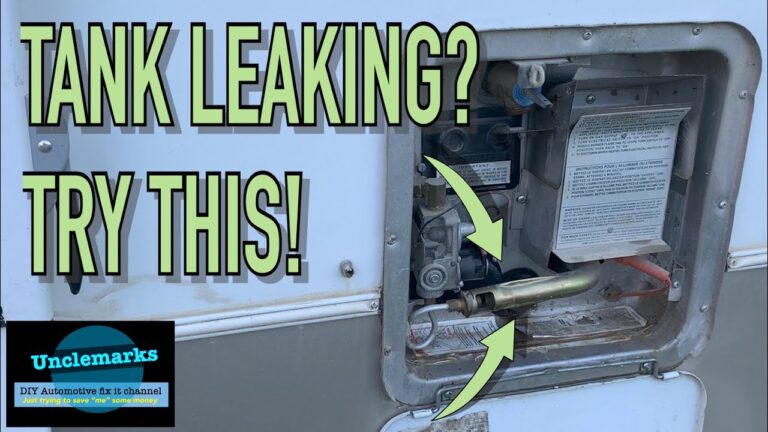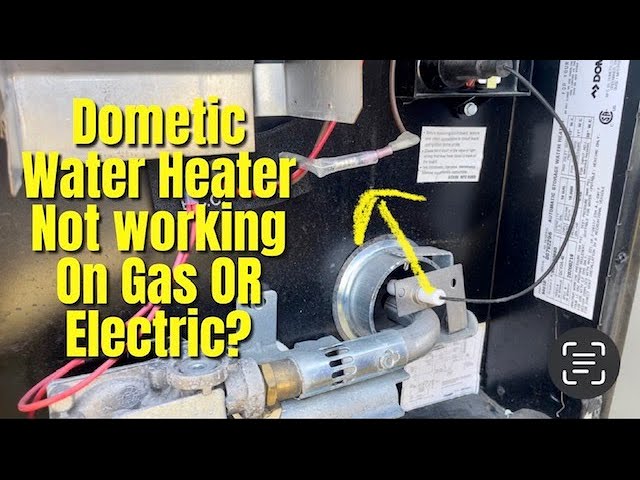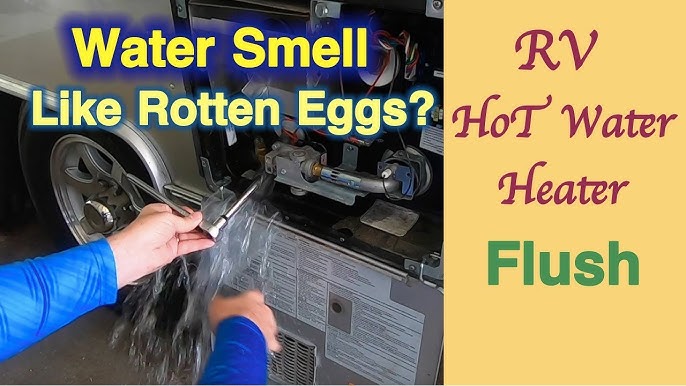Are you tired of running out of hot water during your RV adventures? Imagine the comfort of endless hot showers and consistent water temperatures, no matter where you park your home on wheels.
Installing an RV tankless water heater might just be the upgrade you need to transform your travel experience. In this guide, we’ll show you exactly how to bring the luxury of unlimited hot water to your RV, ensuring every trip is as cozy and convenient as it can be.
Dive in to discover the step-by-step process, essential tips, and why this upgrade is a game-changer for any RV enthusiast like you. Your perfect solution to endless hot water awaits—read on to learn more!

Credit: recpro.com
Benefits Of Tankless Water Heaters
Tankless water heaters offer endless hot water without bulky tanks. RV installation saves space and improves energy efficiency. Enjoy quick access to hot showers and reduced utility costs, enhancing your travel experience.
Switching to a tankless water heater for your RV can feel like a small upgrade, but it brings significant benefits. Imagine a limitless hot shower after a long day of hiking. With a tankless system, you no longer need to ration hot water or wait for the tank to refill. You get instant hot water, which means more comfort and convenience on your adventures.Energy Efficiency
Tankless water heaters save energy by heating water only when you need it. Traditional heaters keep a big tank of water hot all the time, wasting energy. With a tankless system, your energy bills can be lower because you’re not heating water you’re not using.Space Saving
RV space is precious, and tankless heaters take up less room. Without a bulky tank, you have more space for essentials or storage. Imagine fitting that extra camping gear or those cozy blankets without worry.Continuous Hot Water
Have you ever had a shower cut short because the hot water ran out? With a tankless heater, this problem disappears. You enjoy continuous hot water, making showers, dishwashing, and other water needs hassle-free. Isn’t it comforting to know you can rely on uninterrupted hot water?Longer Lifespan
Tankless heaters often last longer than traditional ones. They can serve you well for over 20 years with proper maintenance. Think about the peace of mind knowing you won’t need frequent replacements, saving you time and money.Environmentally Friendly
By using less energy, tankless heaters are kinder to the environment. Every small step counts when you’re trying to reduce your footprint. As an RV enthusiast, you can enjoy nature while protecting it.Lower Maintenance
Regular water heaters can rust and leak over time, requiring repairs. Tankless models are less prone to these issues. You spend less time worrying about maintenance, and more time enjoying your travels. Consider this: How much more enjoyable would your RV trips be with these benefits? A tankless water heater might just be the upgrade your adventures need.
Credit: blog.campingworld.com
Choosing The Right Water Heater
Selecting an RV tankless water heater can improve your travel comfort. This installation ensures endless hot water on demand. Enjoy efficient energy use and more storage space in your RV.
Choosing the right RV tankless water heater is crucial for comfort. A suitable water heater ensures hot water supply, enhancing your travel experience. Selecting the right model involves considering several factors. Let’s explore these aspects to make an informed decision.Factors To Consider
Space availability is vital in RVs. Measure the designated area for the heater installation. Consider the power source compatibility. Some heaters require propane, others electricity. Understand your RV’s energy setup. Look at the water heater’s flow rate. Higher flow rates provide more hot water. Check the heater’s energy efficiency. Efficient models save fuel and reduce costs. Noise levels matter too. Choose a quieter model for peaceful travels.Popular Brands And Models
Several brands offer reliable RV tankless water heaters. Truma is known for efficient models. Its AquaGo line offers quick heating. Girard is popular for compact designs. Ideal for smaller RV spaces. PrecisionTemp models are praised for energy efficiency. They offer consistent hot water. Furrion heaters are durable and user-friendly. They feature advanced technology. Camplux is a budget-friendly option. Perfect for cost-conscious travelers. Explore these brands to find the perfect fit for your needs.Preparation For Installation
Getting ready to install an RV tankless water heater involves some essential steps. Proper preparation ensures a smooth installation process. It also helps in avoiding common mistakes. This guide provides a straightforward approach for beginners. Follow the steps and enjoy a hassle-free experience.
Tools Needed
Start by gathering the necessary tools. A wrench set is crucial for tightening connections. Use a screwdriver for securing fixtures. A drill will help in creating necessary holes. A tape measure ensures accurate measurements. Keep a utility knife handy for cutting. These tools are essential for a successful installation.
Safety Precautions
Safety should be your top priority. Turn off all power supplies before starting. This prevents electrical hazards. Wear safety goggles to protect your eyes. Gloves protect your hands from sharp edges. Ensure the installation area is well-ventilated. This is important for your safety and comfort. Always follow the manufacturer’s guidelines. These are designed to keep you safe during installation.
Step-by-step Installation Process
Installing an RV tankless water heater can enhance your travel experience. You get hot water on demand without the hassles of a bulky unit. This step-by-step guide simplifies the process. It’s designed for easy understanding, even if you’re new to DIY projects. Follow these steps for a smooth installation.
Disconnecting The Old Water Heater
Begin by turning off the power and water supply to the old heater. Safety first. Carefully remove the old unit, ensuring no wires or pipes are damaged. This prepares the space for the new tankless unit. Double-check everything is properly disconnected.
Mounting The Tankless Unit
Find a suitable spot for the tankless water heater. It should be easily accessible. Secure the unit firmly using mounting brackets. Ensure it’s level to avoid any operational issues. Tighten all screws and bolts for stability.
Connecting Water Lines
Identify the hot and cold water lines. Connect them to the tankless unit using appropriate fittings. Ensure a tight seal to prevent leaks. Test the connections by turning on the water. Check for any drips or moisture around the fittings.
Electrical Setup
Connect the electrical wires according to the manufacturer’s instructions. This is crucial for the heater to function properly. Ensure all connections are secure and insulated. Turn on the power and test the heater. Verify that it heats water effectively.
Testing And Adjustments
Testing and adjustments ensure your RV tankless water heater runs smoothly. Check water temperature and pressure for optimal performance. Adjust settings for comfort and efficiency, ensuring a perfect hot water supply on the road.
After the installation of your RV tankless water heater, it’s crucial to ensure everything is running smoothly. Testing and adjustments are essential steps to confirm that your new system is functioning efficiently and safely. This process not only optimizes performance but also extends the lifespan of your heater. Let’s dive into the specifics to make sure your heater is ready to deliver hot showers on your next adventure.Ensuring Proper Functionality
Begin by turning on a hot water faucet in your RV. Listen for the heater activating and feel the water temperature rising. If the water stays cold, you may need to check the power supply or gas connection. Inspect the heater for any leaks. Even a small drip can lead to significant water damage over time. Tighten any loose fittings and ensure all connections are secure. Run the water for a few minutes. This checks if the heater maintains a consistent temperature without fluctuating. If you notice any issues, re-evaluate the installation steps to ensure nothing was missed.Temperature Settings
Adjusting the temperature settings is key to comfort and safety. Most RV tankless water heaters have a control panel where you can set the desired temperature. Aim for a range between 110°F and 120°F. Test the water temperature by placing a thermometer under the running water. This helps verify that the heater is calibrated correctly to your set temperature. Consider personal preferences. Some like their showers hotter, while others prefer a milder warmth. Adjust accordingly, and remember that setting the temperature too high can increase the risk of scalding. Regularly checking and adjusting these settings can prevent unexpected surprises. What temperature do you prefer for your showers? Tailor the settings to suit your needs. By thoroughly testing and making necessary adjustments, you ensure your RV adventures remain comfortable and hassle-free.Maintenance Tips
Maintaining your RV tankless water heater ensures it runs efficiently. Regular care can prevent costly repairs and extend its lifespan. Here are some easy maintenance tips to keep your water heater in top shape.
Regular Cleaning
Clean the water heater every six months. This removes mineral buildup and sediment. Use a vinegar solution to flush the system. Disconnect power before cleaning. Follow the manufacturer’s guide for safety. Regular cleaning improves performance and water quality.
Troubleshooting Common Issues
Encountering problems with your water heater? Check for error codes first. Consult the user manual for solutions. Common issues include low water pressure and temperature fluctuations. Ensure all connections are secure. Inspect the heater for visible damage.
Listen for unusual sounds. These may indicate a problem. If issues persist, contact a professional. Regular troubleshooting prevents bigger problems later.

Credit: www.youtube.com
Conclusion
Installing an RV tankless water heater brings many benefits. You get endless hot water, saving time and energy. The space-saving design fits perfectly in tight RV spaces. It’s eco-friendly, reducing your carbon footprint. Plus, it enhances your RV experience with modern technology.
Make sure to follow the installation steps carefully. Safety first! Consult a professional if needed. Enjoy the comfort and convenience on your next adventure. Happy travels with your efficient water heater!



